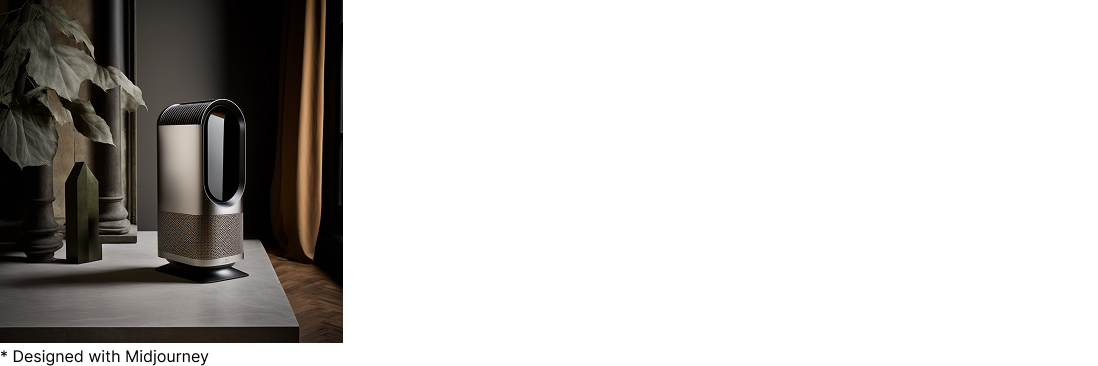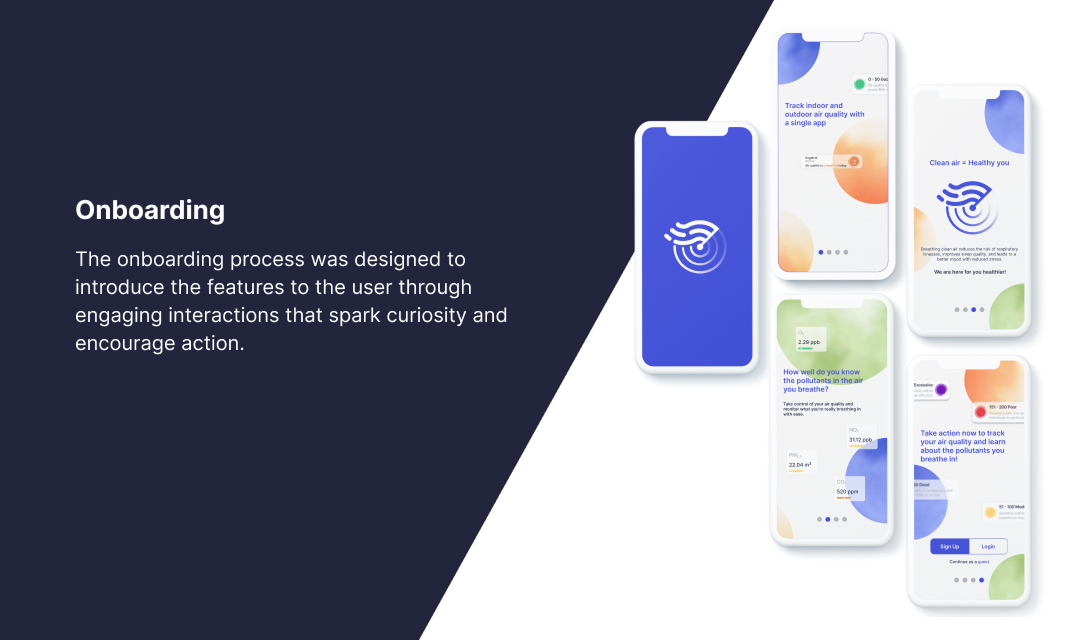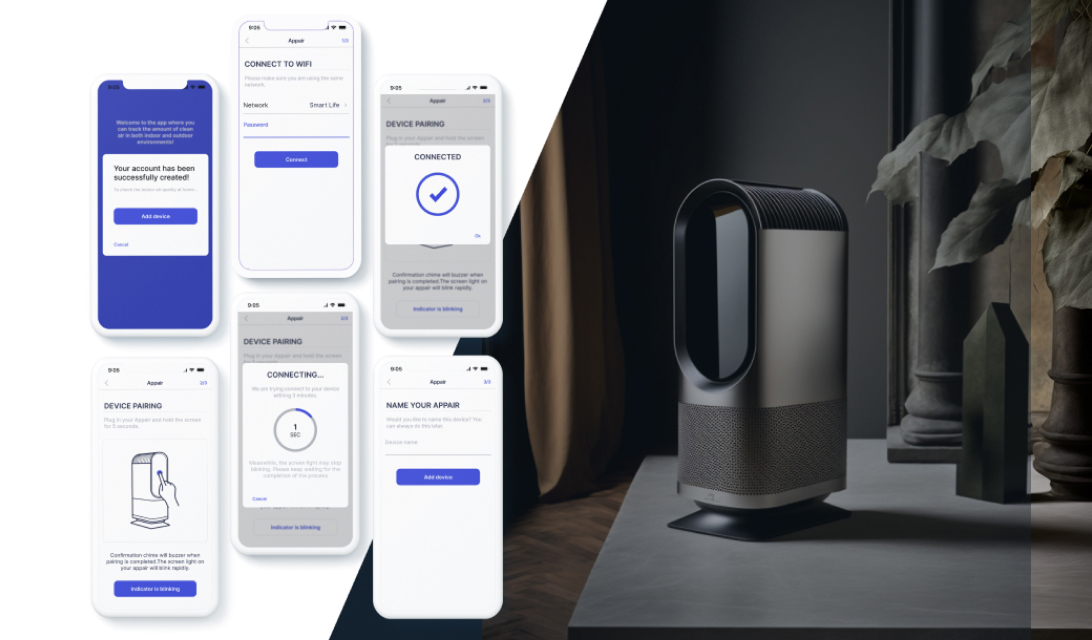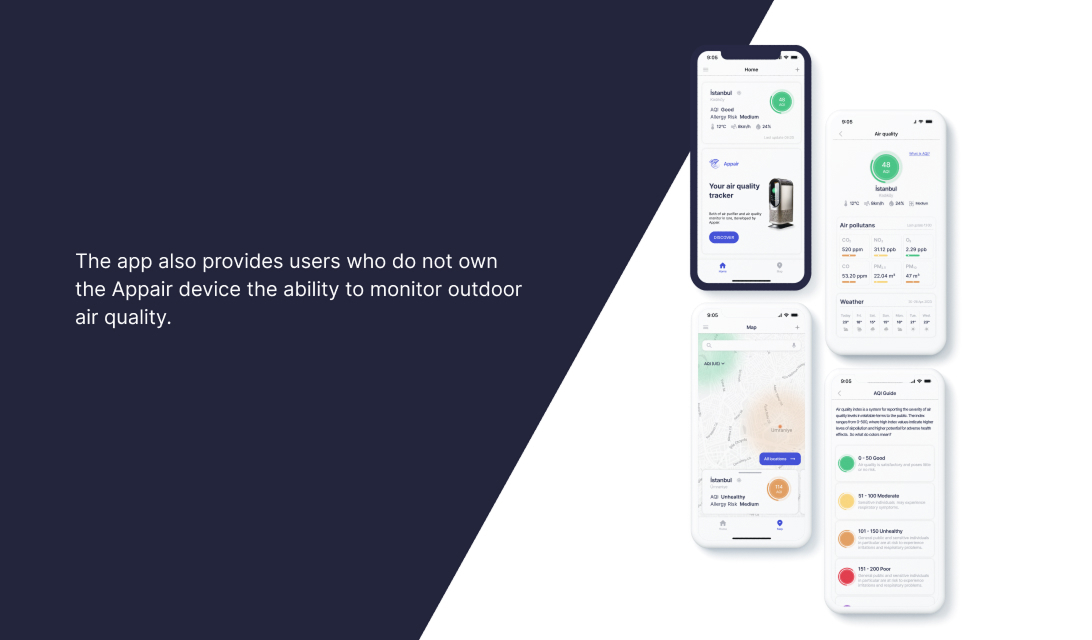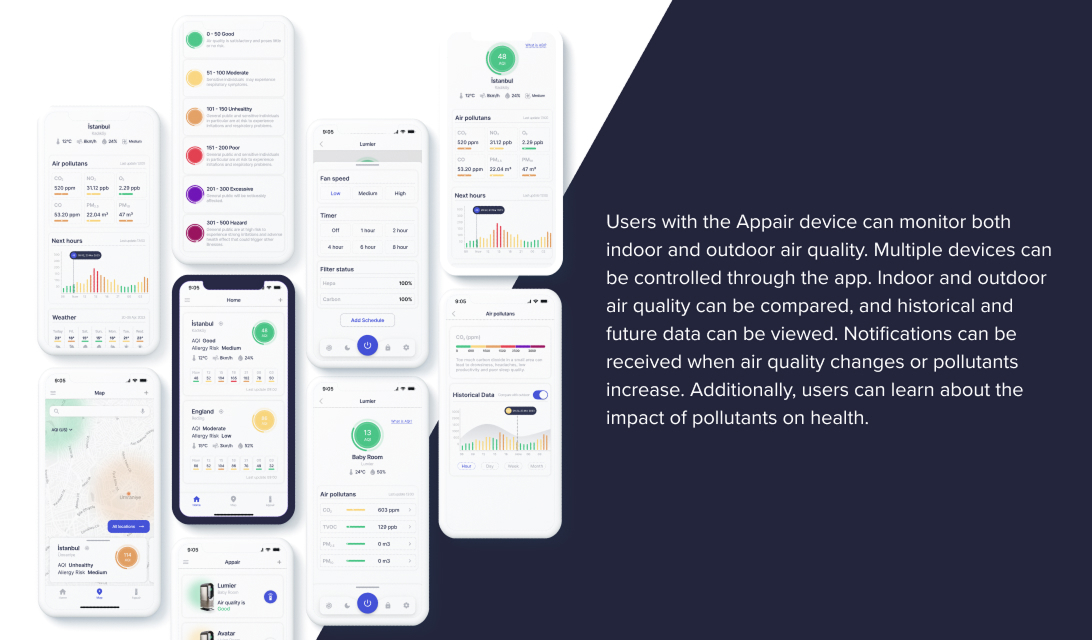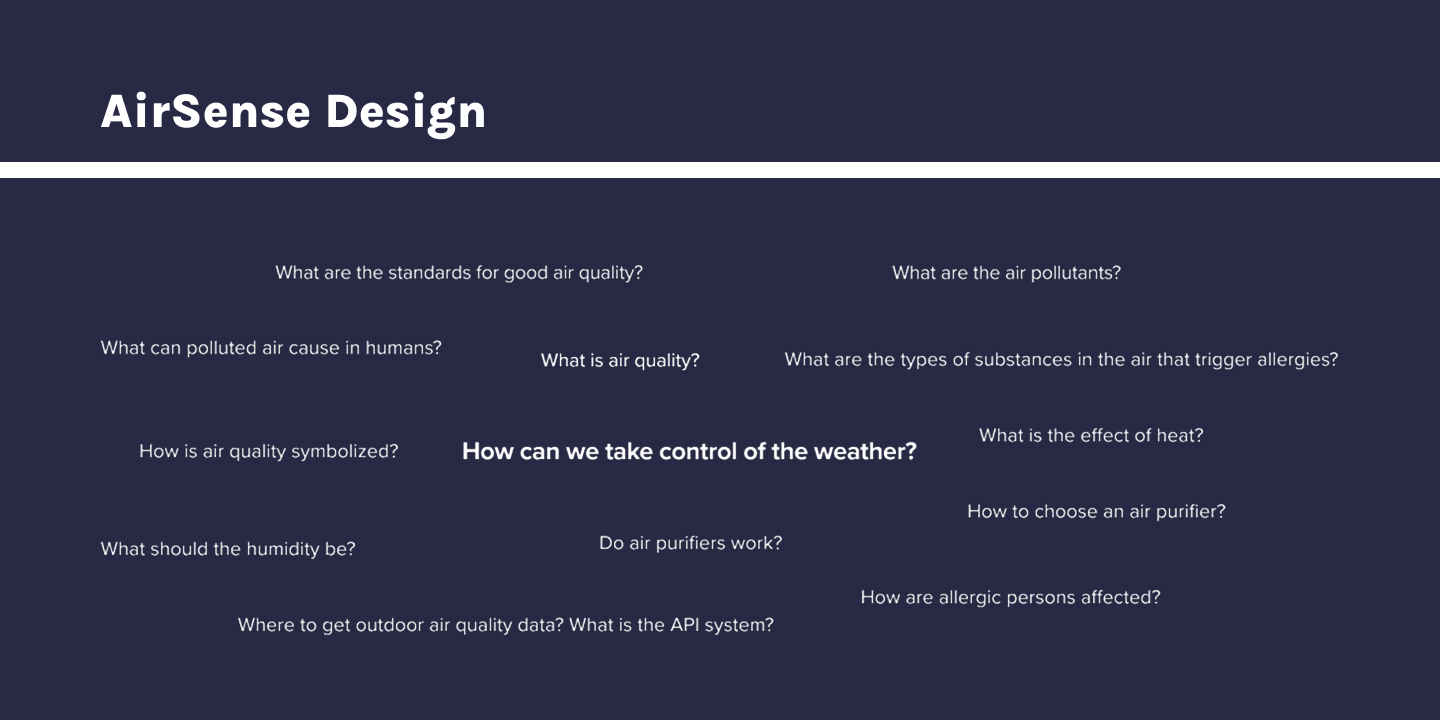
Research and Data Collection

Action
• The topic was thoroughly researched, with all questions addressed through netnography and user interviews.
• A comprehensive benchmark study was conducted globally, focusing on brands of air quality monitors and air purifiers with smart features, including remote control capabilities.
Result
• Through this in-depth research and benchmarking, key user needs and pain points around air quality monitoring and smart home integration were identified..
Research and Data Analysis



Goals
• To organize and make sense of the research findings, create a clear hierarchy, and generate valuable insights for the ideation and design phases.
Action
• Conducted an affinity map study to analyze and categorize the research data.
• Grouped the findings under six key headings: User Types, Spaces, Weather Conditions, Pollutants, Air Quality, and Air Purifiers.
• Analyzed the flows of application screens for both air purifiers and non-device-based air quality measurement scenarios to align with user needs and functional requirements.
Result
• Created a structured foundation for ideation, ensuring that the design would address the most critical user needs and context-based factors.
• Established a clear visual and functional flow for the app, enhancing usability and ensuring that all interactions, whether device-related or not, were intuitive and seamless for the user.
Idea Development


Goals
• Develop solution and design ideas based on research outputs and user experience.
• Define key focus areas for air purifiers and air quality monitors to create a user-friendly application design.
• Create a globally usable, accessible, and user-centered design.
Action
• Identified key focus areas for the air purifier: performance, energy efficiency, filter life, noise level, size, and design.
• Defined key focus areas for the air quality monitor and application: real-time tracking of air quality levels, identification of pollutants, data recording, and ease of use.
• Prioritized the following for the application: global usage, accessibility (ability to use the app without the device), user-centered design, real-time air quality display, educational content (detailed information about pollutants and global air standards), and a stylish, portable device that can both purify and monitor air.
• Conducted card sorting and analysis with users based on affinity map outputs, leading to the creation of the information architecture.
Result
• Initiated a design process that addresses user needs and market demands, with clear application priorities defined.
• Established a clear roadmap for a user-friendly application design for both air purifiers and air quality monitors.
• Developed an intuitive information architecture, allowing users to navigate the application seamlessly and ensuring a smooth transition to the design phase.
Design Process

• Created wireframes and flowcharts based on research outputs.
• Developed detailed wireframes to structure the application's user flow.
• Used the AI application Midjourney to generate concept visuals for the physical product design.
Air Purification and Monitoring Device
